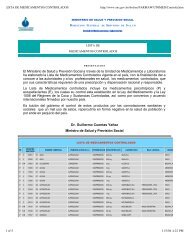All Load Data - Intoku.net
All Load Data - Intoku.net
All Load Data - Intoku.net
You also want an ePaper? Increase the reach of your titles
YUMPU automatically turns print PDFs into web optimized ePapers that Google loves.
Introduction: the chicken or the egg?This is the era of immunology in canine dermatology.Canine atopic dermatitis is defined as “a ge<strong>net</strong>ically-predisposed inflammatory and pruriticallergic skin disease…most commonly associated with IgE antibodies to environmentalallergens” (Olivry et al., 2001). Derangements in immunological responses to allergens havebeen extensively studied in connection with their role in generating dermal inflammationand pruritus. By contrast, changes in the epidermal barrier that accompany inflammatorydermatoses have long been considered downstream participants in the disease pathogenesis.Consequently, specific or nonspecific anti-inflammatory therapy has been the focus of thetreatment of canine atopic dermatitis.The concept is emerging in human medicine that skin barrier abnormality is not just asecondary phenomenon, but rather a critical - if not primary - triggering factor in inflammatoryskin disease (Elias & Feingold, 2001). The outer layer of the epidermis (stratum corneum),the defense barrier between the outside world and the inside of the body, is not just an inertend product, but rather a sophisticated biosensor that responds to external perturbations.When the skin surface is injured or the skin barrier is compromised, a variety of signalsare produced (cytokines, growth factors, lipid mediators) that stimulate metabolic responsesin the underlying living epidermis. The responses are aimed at normalizing the stratumcorneum function. Over stimulation of this process stimulates signal cascades that initiateinflammatory events in deeper skin layers. The best-known example of this sequence isthe so-called cytokine cascade, which has been proposed to provoke or sustain severalimportant inflammatory dermatoses. According to this new outside-inside paradigm, it isthe faulty barrier that drives and sustains inflammation in underlying skin layers.It seems reasonable to think that both primary epidermal barrier dysfunction and inappropriateimmunologic response contribute to the full expression of atopic dermatitis in dogs. Therefore,therapies aimed at normalizing epidermal barrier function should not be seen as secondaryor inconsequential, and management of allergic skin disease should consider treatment ofinflammation along with selection of an appropriate barrier repair strategy.This very good idea has driven the development of a new topical lipid replacement therapyby Virbac Animal Health. We invite you to discover the <strong>All</strong>erderm ® Spot On in the followingpages.Christophe A. Rème, DVMHugues Gatto, PhDMedical DepartmentVirbac SANancy Bathurst, DVMResearch & DevelopmentVirbac Corporationintroduction











